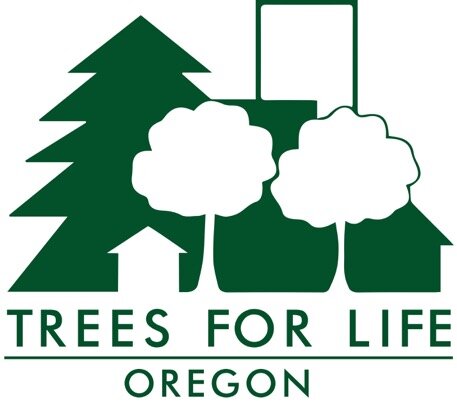Local Developers Discuss Their Experiences Preserving Large Trees and Suggest How to Make It Easier
Watch the Trees for Life Webinar!
Large-form trees add value to residential and commercial properties, say three Portland builders, because people desire to live and work near big trees. Relying on will, intention, and doggedness, it is possible to preserve such trees in development. But revised City policies and practices, they say, would make it a whole lot easier to do. One suggestion: Require builders to wiggle sidewalks around existing large-form trees on private property instead of compelling them to apply for a variance to do it, which takes time and money.
Builders shouldn’t have to be advocates of large-tree preservation, says one developer. Working around large trees and creating space for new ones should instead be built into policies and practices. Most developers won’t bother with time-sucking processes and hassles.
These are some of the takeaways from a Trees for Life Oregon webinar in which developers Ethan Beck of Ethan Beck of Ethan Beck Homes LLC, Westin Glass of Guerrilla Development, and Eli Spevak of Orange Splot LLC illustrated with specific examples how they work with, around, and despite tree-related codes to preserve big trees.
Part of the problem, they say, is the complexity of the tree code, and the conflicting rulings they sometimes get from different City bureaus such as Urban Forestry and the Portland Bureau of Transporation.
Just a few of the ideas and recommendations for change that came out of the webinar:
--Have the City educate developers on existing ways to preserve large-form trees. For instance, says Eli Spevak, planned development (Title 33.270) is one method that provides the flexibility to preserve trees. Not all developers know about it or use it. Developers would also benefit from City-hosted workshops on new code changes, and from learning that it can be more costly to remove a tree than to save it.
--Have the City educate property owners, sellers, and developers on ways to protect trees such as through easements and tree preservation tracts.
--City code should give builders stormwater management credits for preserving large-form trees that are on private property but are next to the right-of-way (ROW). These credits are awarded for ROW bioswales, says Spevak, but not for large private trees that play an equally vital role.
--Use developers’ fees to create a new City position for a tree expert who will go on site to advise developers who wish to preserve trees what their options are; this same person would mediate and troubleshoot for the builder with the various City bureaus.

